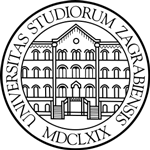Performance Assessment of Three Rendering Engines in 3D Computer Graphics Software
Abstract
The aim of the research was the determination of testing conditions and visual and numerical evaluation of renderings made with three different rendering engines in Maya software, which is widely used for educational and computer art purposes. In the theoretical part the overview of light phenomena and their simulation in virtual space is presented. This is followed by a detailed presentation of the main rendering methods and the results and limitations of their applications to 3D objects. At the end of the theoretical part the importance of a proper testing scene and especially the role of Cornell box are explained. In the experimental part the terms and conditions as well as hardware and software used for the research are presented. This is followed by a description of the procedures, where we focused on the rendering quality and time, which enabled the comparison of settings of different render engines and determination of conditions for further rendering of testing scenes. The experimental part continued with rendering a variety of simple virtual scenes including Cornell box and virtual object with different materials and colours. Apart from visual evaluation, which was the starting point for comparison of renderings, a procedure for numerical estimation and colour deviations of renderings using the selected regions of interest in the final images is presented.






